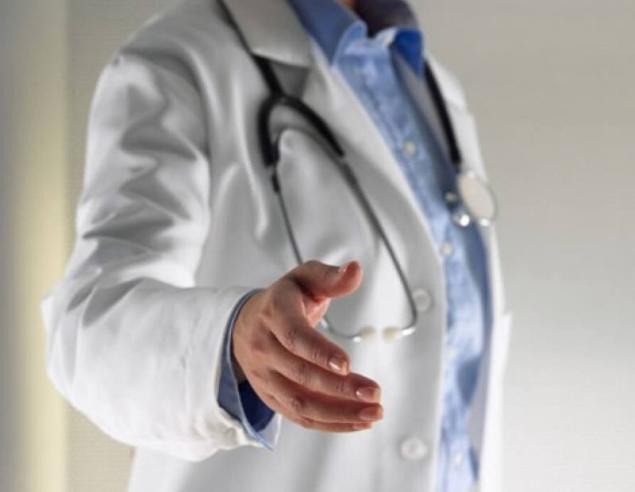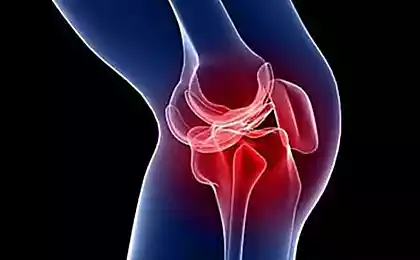572
How to find out whether the medication with the disease
Contrary to widespread belief about the traditional medicine, in fact it is a fast developing science. This is dictated not only by the development of new methods of treatment, but also the emergence of new risk factors for various diseases.
The ratio of efficacy and safety is a key aspect that ought to Orient the choice of treatment. Unfortunately and fortunately, we have available only a single method of assessing the efficacy of medication is clinical studies.
This complex work, and in the wrong hands is a devastating tool of medical science and will be addressed in this article. This will tell Yaroslav Ashikhmin, cardiologist, PhD. med. Sciences, author of over 70 scientific publications, member of the European Association of cardiology (ESC) and American heart Association (AHA).

How to know whether the medicine for the disease?
It would seem that this is simply: it is necessary to assess the condition of a sick person before and after his admission — and the answer is already in our pocket! So we make our own conclusions about how "fit" do we medication, and the doctor gains experience of therapeutic work. Made on the basis of such observations the conclusion can be useful for medical science, but not very often, namely in the treatment of rare diseases and complex patients.
Try to grasp the fine line: the doctor individually selects the treatment patients, each of which is unique; based on his experience, he may appoint including not well understood the drugs or their combination. But he has no moral right to share his experience with other doctors until he will be subjected to scientific scrutiny.
What in the experience?
The causes of errors in the evaluation of the effectiveness of drugs very different.
First, the incredible power of... placebo (and thus, automatically all homeopathic remedies and dietary Supplements). Placebo always secretly been widely applied in practice, including recognized experts in allopathic medicine.
So, the great physician, M. Ya. Mudrov, in some cases, was administered to patients special "simple", "gold" and "silver" powders. According to Mr. Beecher published "the powerful placebo", and placebo is effective method of treatment in 35% of cases.
Secondly, has accumulated a large private experience of application of a method, the doctor usually deals with a limited number of patients. "Features" unique methods, like prototype cars, good in the hands of their creators, but rarely suitable for routine clinical practice.
Finally, the doctor can use the method to which it is "stuck", not adopting new medical technology. And it is not always caused by inertia and unwillingness to learn, and sometimes due to the objective realities of the functioning of our health system.
The scientific secrets of confectionery
How to obtain proof that a medicine really works?
So, initially you need to select the population of patients that should meet the real patientswho will subsequently receive the treatment. For example, in the study of treatment of chronic diseases it is very important to take into account the age of patients included and the treatment of urgent patients time after onset of disease and severity.
Next, you need to choose the so-called "endpoint", i.e. clear criteria which would subsequently judge the effectiveness of treatment. Endpoints can be "soft", such as improvement of the clinical picture according to the ultrasound, or "hard" such as recovery from disease or mortality.
Lately in Vogue are increasingly part of "combined endpoint" uniting unequal outcomes, for example, the number of deaths plus the number of hospitalizations in connection with the aggravation of the disease.
You have to understand that your chosen end point — like a wax seal. So, in case of using the aforesaid combination of the endpoint, if the advantage in efficiency will ultimately be achieved only because of the reduction in risk of hospitalization, and the number of deaths will not change, the drug will be formally recognized as an effective and, very likely, will be included in the official recommendations. Such examples of mixing "hard" and "soft" spots today, many (see, for example, a study of SENIORS).
The investigational drug is necessary to something to compare. If the treatment of the disease is not developed, the role of the comparison drug is placebo, but if it exists — the existing generally accepted standard treatment.
"Traditional" tools also differ in efficiency, which is the basis for speculation: some researchers seek to compare a new drug with a weaker competitor, formally included in the recommendation, but in reality is not practically used (for example, in studies of new beta-blockers as a control drug is often used atenolol).
The comparator should ideally be indistinguishable from the investigational medication for the patient and for the physician-researcher is a double blind method. Its use is the key to minimize errors caused by the subjectivity of doctors and patients.
Getting the patient to a particular group - randomization — is determined by the random number generator. When combining these two methods, the study becomes double blind, randomized, placebo-controlled (RCTS), i.e. the work of "the highest order".
Such investigations do not violate the principles of ethics in the case the patient explained in detail all aspects of the work, including the chance of hitting one or another group, and written informed consent was obtained.
The observance of the following principles of bioethics, Ethics Committee, without the sanction which the study could not be started.

Roster
The degree of confidence in the results of clinical studies directly related to their level of evidence. To navigate in the ocean of research, you need to understand their seniority.
On the bottom tier are the research of type "case— control", which include the majority of dissertations and small domestic research. During these operations the group of patients receiving a treatment compared with the group not receiving it.
Randomization, as a rule, is not carried out, and the blind method is not used. Often the studied groups of patients poorly comparable. Such research is acceptable in the case when it comes to the treatment of very rare diseases, because they allow you to gain sufficient to analyze the number of observations.
Further in the evidence ladder are the so-called analyses of patient registries. Currently they are gaining popularity due to the accumulation of a large array observations of patients. Today we often hear reports of "sensational" data about the presence of fantastic relationships, or unexpectedly severe effect of a drug on mortality (and in both directions) based on the analysis of such registers.
The registers represent the databases are populated with all sorts of features observed in real clinical practice patients, results of their examinations and prescribed treatment. The doctors who contribute information about their patients in such a case, usually have no idea what purpose it will be used in a few years.
The middle tier in the hierarchy of evidence-based medicine is the prospective cohort studies. Their design is regulated prior to the inclusion of patients who are traced for a long time. The disadvantages of this type of studies are biased allocation to groups and the absence of zaleplena.
Trendsetters in the world of evidence-based medicine is considered as the above-described RCTS in which the possibility of error is minimized. The standard formula of their results is as follows: "XXX In RCTS, which included so many thousands of patients, it was shown that compared to placebo the drug And significantly reduces mortality from disease B by X%". Unfortunately, many doctors this conclusion, and limited to, not paying attention to detail, which will be mentioned below.
On the top of the hierarchy are the so-called meta— analysis, "combining" the results of several RCTS involving biomedical statistics unit. The most authoritative organization, conducting meta-analyses, is "The Cochrane Collaboration". "Korenovskii" meta-analyses are conducted according to very strict rules governing the principles of selection and processing of information.
Insidious statistics
The authors of the design study is trying to lay a Foundation design that will help realize even the most miserable, but clinically significant advantages over competitors or a placebo. And the main battle is over the superiority of the new method over the comparison drug erupted on the stage of the statistical processing of the results.
Scientists"peacekeepers" had earlier pinned its hopes on using the so-called "triple blind" in which the distribution of patients by groups is unknown not only to the doctors and the patients, but statisticians and data processing facilities. But for obvious reasons this method has not caught on.
To assert that the drug works (ie, affects the achievement of the endpoints), it is necessary to conduct statistical processing with application of several mathematical criteria. And in most cases can be used various methods of data processing, and not always then, what method will be used is decided before the study began.
Interestingly, widely (and in most cases illegal!) the test is Student was invented by William Grosseto, take care as not to shift the yeast in the famous beer "Guinness". Another criterion was proposed by Fisher, to reflect on how many cups of milk you need to test to see if his cheating lady, says that she is able to distinguish that the first pour in a Cup of milk or tea.
Catch me if you can
Today medicine recognizes effective if it significantly affects the achievement of the endpoints. However, even "very strong" effects may be statistically insignificant and Vice versa. The degree of importance is determined by the level for which values of "less than 0.05" is a real struggle.
Chances to "win placebo" can be increased if you schedule several interim analyses, having to stop the study immediately, as efficiency curves (Kaplan-Meier) begin to diverge.
The formal justification can serve as ethical considerations, primarily the need for a treatment control group. In some cases, by actually observing the group for a little longer, you may find that the effectiveness of treatment and placebo again equalized. Therefore, the results of most of the "early completed" studies should be interpreted with caution.
The adjustment Bureau
The true skill statistic manifests itself in the need to adjust the results for other risk factors, which is denoted in the English language powerful word adjustment.
In fact, patients in the experimental group can recover faster not because of the actions of drugs per se, but because of other factors (for example, more frequent antibiotic treatment, young age, or an easier course of the disease).
Of course, this analysis is very important because without it is often impossible to separate the drug effect from the influence of other factors. But the ability to easily change the size of the effect in one direction or another, spending adjustment for the cluster of risk factors that sometimes creates the temptation to present the picture better than it is. Good form is mention in the Protocol before the study of those factors which in the end will be adjusted.
The miracle of subgroup analysis
A subgroup analysis is extremely important in the case that the population of patients not homogeneous. In large studies is determined in advance which subgroups will be analysed separately at the end of the work (what is called a pre-specified subgroup analysis).
For example, traditionally tests conducted for different age subgroups. When the "failure" studies of pre-planned analyses of subgroups can be "lifeline". On the contrary, if the study overall will show good results, and in one of the subgroups of treatment will not be effective, such analysis is usually carefully hidden in the nooks chapters "Results" and subsequently seldom taken into consideration.
How would this be desirable to the sponsors, but the data a posteriori analysis of subgroups will never be accepted as evidence of Western regulatory authorities, and in serious scientific circles.

Research— Gemini
Another interesting technique, also based on the division of patients into groups is to create a research of twins designs which have minimal differences (e.g., testing one drug to treat one disease at different stages).
When you receive positive results in both studies, their data is then combined in and out of a single publication in a ranked journal. Negative result obtained in one study, the emphasis is often shifted on the winning work and the results brother loser are published in a small journal. Or not published.
Remember all
The scale is hidden from us data "failed" research is truly vast. If you perform initiated by the CI and compare them to the number of completed works, it appears that the underwater part of the iceberg "of evidence-based medicine" is up to 80% of its volume.
This "dark matter" consists mainly of started, but then inexplicably stopped KEY. The lack of the medical community data on side effects and low efficiency of "innovative" methods of treatment, forcing researchers around the world to repeatedly step on the same rake, obviously repeating unsuccessful experiments.
What to do doctor?
Thus, evidence-based medicine provides a basis on which to build judgment of a physician about the optimal treatment tactics. When choosing a method of treatment, the doctor relies primarily on your own experience, however, he must know all basic research in the field of those pathologies, which he daily treats.
Among very experienced doctors today gaining popularity of so-called individualized, "precision" treatment (talented medical care, TMC ), which often is contrary to the recommendations.
Not concerning the ethical and organizational issues, it should be noted that in order to use TMC physician must possess exceptionally high skills, visit the relevant section on the world of medical congresses and thorough knowledge of all RCTS in the area of their responsibility.
The rules of health care spins on all occasionsthe REFRESH Frequency of the human body
Often poorly educated, but arrogant doctors protect reliable, but not tested in RCTS method of treatment, drawing an analogy with the parachutes, which "have never been studied in RCTS, but their effectiveness is no doubt". I would like to advise them, if health permits, to have fun during the event to make an exciting jump from a modern and well-proven "in practice" and apply from the beginning of XX century German folding a parachute. published
Author: Yaroslav Ashikhmin
Source: trv-science.ru/2012/10/09/recepty-iz-povarennojj-knigi-klinicheskikh-issledovanijj/
The ratio of efficacy and safety is a key aspect that ought to Orient the choice of treatment. Unfortunately and fortunately, we have available only a single method of assessing the efficacy of medication is clinical studies.
This complex work, and in the wrong hands is a devastating tool of medical science and will be addressed in this article. This will tell Yaroslav Ashikhmin, cardiologist, PhD. med. Sciences, author of over 70 scientific publications, member of the European Association of cardiology (ESC) and American heart Association (AHA).

How to know whether the medicine for the disease?
It would seem that this is simply: it is necessary to assess the condition of a sick person before and after his admission — and the answer is already in our pocket! So we make our own conclusions about how "fit" do we medication, and the doctor gains experience of therapeutic work. Made on the basis of such observations the conclusion can be useful for medical science, but not very often, namely in the treatment of rare diseases and complex patients.
Try to grasp the fine line: the doctor individually selects the treatment patients, each of which is unique; based on his experience, he may appoint including not well understood the drugs or their combination. But he has no moral right to share his experience with other doctors until he will be subjected to scientific scrutiny.
What in the experience?
The causes of errors in the evaluation of the effectiveness of drugs very different.
First, the incredible power of... placebo (and thus, automatically all homeopathic remedies and dietary Supplements). Placebo always secretly been widely applied in practice, including recognized experts in allopathic medicine.
So, the great physician, M. Ya. Mudrov, in some cases, was administered to patients special "simple", "gold" and "silver" powders. According to Mr. Beecher published "the powerful placebo", and placebo is effective method of treatment in 35% of cases.
Secondly, has accumulated a large private experience of application of a method, the doctor usually deals with a limited number of patients. "Features" unique methods, like prototype cars, good in the hands of their creators, but rarely suitable for routine clinical practice.
Finally, the doctor can use the method to which it is "stuck", not adopting new medical technology. And it is not always caused by inertia and unwillingness to learn, and sometimes due to the objective realities of the functioning of our health system.
The scientific secrets of confectionery
How to obtain proof that a medicine really works?
So, initially you need to select the population of patients that should meet the real patientswho will subsequently receive the treatment. For example, in the study of treatment of chronic diseases it is very important to take into account the age of patients included and the treatment of urgent patients time after onset of disease and severity.
Next, you need to choose the so-called "endpoint", i.e. clear criteria which would subsequently judge the effectiveness of treatment. Endpoints can be "soft", such as improvement of the clinical picture according to the ultrasound, or "hard" such as recovery from disease or mortality.
Lately in Vogue are increasingly part of "combined endpoint" uniting unequal outcomes, for example, the number of deaths plus the number of hospitalizations in connection with the aggravation of the disease.
You have to understand that your chosen end point — like a wax seal. So, in case of using the aforesaid combination of the endpoint, if the advantage in efficiency will ultimately be achieved only because of the reduction in risk of hospitalization, and the number of deaths will not change, the drug will be formally recognized as an effective and, very likely, will be included in the official recommendations. Such examples of mixing "hard" and "soft" spots today, many (see, for example, a study of SENIORS).
The investigational drug is necessary to something to compare. If the treatment of the disease is not developed, the role of the comparison drug is placebo, but if it exists — the existing generally accepted standard treatment.
"Traditional" tools also differ in efficiency, which is the basis for speculation: some researchers seek to compare a new drug with a weaker competitor, formally included in the recommendation, but in reality is not practically used (for example, in studies of new beta-blockers as a control drug is often used atenolol).
The comparator should ideally be indistinguishable from the investigational medication for the patient and for the physician-researcher is a double blind method. Its use is the key to minimize errors caused by the subjectivity of doctors and patients.
Getting the patient to a particular group - randomization — is determined by the random number generator. When combining these two methods, the study becomes double blind, randomized, placebo-controlled (RCTS), i.e. the work of "the highest order".
Such investigations do not violate the principles of ethics in the case the patient explained in detail all aspects of the work, including the chance of hitting one or another group, and written informed consent was obtained.
The observance of the following principles of bioethics, Ethics Committee, without the sanction which the study could not be started.

Roster
The degree of confidence in the results of clinical studies directly related to their level of evidence. To navigate in the ocean of research, you need to understand their seniority.
On the bottom tier are the research of type "case— control", which include the majority of dissertations and small domestic research. During these operations the group of patients receiving a treatment compared with the group not receiving it.
Randomization, as a rule, is not carried out, and the blind method is not used. Often the studied groups of patients poorly comparable. Such research is acceptable in the case when it comes to the treatment of very rare diseases, because they allow you to gain sufficient to analyze the number of observations.
Further in the evidence ladder are the so-called analyses of patient registries. Currently they are gaining popularity due to the accumulation of a large array observations of patients. Today we often hear reports of "sensational" data about the presence of fantastic relationships, or unexpectedly severe effect of a drug on mortality (and in both directions) based on the analysis of such registers.
The registers represent the databases are populated with all sorts of features observed in real clinical practice patients, results of their examinations and prescribed treatment. The doctors who contribute information about their patients in such a case, usually have no idea what purpose it will be used in a few years.
The middle tier in the hierarchy of evidence-based medicine is the prospective cohort studies. Their design is regulated prior to the inclusion of patients who are traced for a long time. The disadvantages of this type of studies are biased allocation to groups and the absence of zaleplena.
Trendsetters in the world of evidence-based medicine is considered as the above-described RCTS in which the possibility of error is minimized. The standard formula of their results is as follows: "XXX In RCTS, which included so many thousands of patients, it was shown that compared to placebo the drug And significantly reduces mortality from disease B by X%". Unfortunately, many doctors this conclusion, and limited to, not paying attention to detail, which will be mentioned below.
On the top of the hierarchy are the so-called meta— analysis, "combining" the results of several RCTS involving biomedical statistics unit. The most authoritative organization, conducting meta-analyses, is "The Cochrane Collaboration". "Korenovskii" meta-analyses are conducted according to very strict rules governing the principles of selection and processing of information.
Insidious statistics
The authors of the design study is trying to lay a Foundation design that will help realize even the most miserable, but clinically significant advantages over competitors or a placebo. And the main battle is over the superiority of the new method over the comparison drug erupted on the stage of the statistical processing of the results.
Scientists"peacekeepers" had earlier pinned its hopes on using the so-called "triple blind" in which the distribution of patients by groups is unknown not only to the doctors and the patients, but statisticians and data processing facilities. But for obvious reasons this method has not caught on.
To assert that the drug works (ie, affects the achievement of the endpoints), it is necessary to conduct statistical processing with application of several mathematical criteria. And in most cases can be used various methods of data processing, and not always then, what method will be used is decided before the study began.
Interestingly, widely (and in most cases illegal!) the test is Student was invented by William Grosseto, take care as not to shift the yeast in the famous beer "Guinness". Another criterion was proposed by Fisher, to reflect on how many cups of milk you need to test to see if his cheating lady, says that she is able to distinguish that the first pour in a Cup of milk or tea.
Catch me if you can
Today medicine recognizes effective if it significantly affects the achievement of the endpoints. However, even "very strong" effects may be statistically insignificant and Vice versa. The degree of importance is determined by the level for which values of "less than 0.05" is a real struggle.
Chances to "win placebo" can be increased if you schedule several interim analyses, having to stop the study immediately, as efficiency curves (Kaplan-Meier) begin to diverge.
The formal justification can serve as ethical considerations, primarily the need for a treatment control group. In some cases, by actually observing the group for a little longer, you may find that the effectiveness of treatment and placebo again equalized. Therefore, the results of most of the "early completed" studies should be interpreted with caution.
The adjustment Bureau
The true skill statistic manifests itself in the need to adjust the results for other risk factors, which is denoted in the English language powerful word adjustment.
In fact, patients in the experimental group can recover faster not because of the actions of drugs per se, but because of other factors (for example, more frequent antibiotic treatment, young age, or an easier course of the disease).
Of course, this analysis is very important because without it is often impossible to separate the drug effect from the influence of other factors. But the ability to easily change the size of the effect in one direction or another, spending adjustment for the cluster of risk factors that sometimes creates the temptation to present the picture better than it is. Good form is mention in the Protocol before the study of those factors which in the end will be adjusted.
The miracle of subgroup analysis
A subgroup analysis is extremely important in the case that the population of patients not homogeneous. In large studies is determined in advance which subgroups will be analysed separately at the end of the work (what is called a pre-specified subgroup analysis).
For example, traditionally tests conducted for different age subgroups. When the "failure" studies of pre-planned analyses of subgroups can be "lifeline". On the contrary, if the study overall will show good results, and in one of the subgroups of treatment will not be effective, such analysis is usually carefully hidden in the nooks chapters "Results" and subsequently seldom taken into consideration.
How would this be desirable to the sponsors, but the data a posteriori analysis of subgroups will never be accepted as evidence of Western regulatory authorities, and in serious scientific circles.

Research— Gemini
Another interesting technique, also based on the division of patients into groups is to create a research of twins designs which have minimal differences (e.g., testing one drug to treat one disease at different stages).
When you receive positive results in both studies, their data is then combined in and out of a single publication in a ranked journal. Negative result obtained in one study, the emphasis is often shifted on the winning work and the results brother loser are published in a small journal. Or not published.
Remember all
The scale is hidden from us data "failed" research is truly vast. If you perform initiated by the CI and compare them to the number of completed works, it appears that the underwater part of the iceberg "of evidence-based medicine" is up to 80% of its volume.
This "dark matter" consists mainly of started, but then inexplicably stopped KEY. The lack of the medical community data on side effects and low efficiency of "innovative" methods of treatment, forcing researchers around the world to repeatedly step on the same rake, obviously repeating unsuccessful experiments.
What to do doctor?
Thus, evidence-based medicine provides a basis on which to build judgment of a physician about the optimal treatment tactics. When choosing a method of treatment, the doctor relies primarily on your own experience, however, he must know all basic research in the field of those pathologies, which he daily treats.
Among very experienced doctors today gaining popularity of so-called individualized, "precision" treatment (talented medical care, TMC ), which often is contrary to the recommendations.
Not concerning the ethical and organizational issues, it should be noted that in order to use TMC physician must possess exceptionally high skills, visit the relevant section on the world of medical congresses and thorough knowledge of all RCTS in the area of their responsibility.
The rules of health care spins on all occasionsthe REFRESH Frequency of the human body
Often poorly educated, but arrogant doctors protect reliable, but not tested in RCTS method of treatment, drawing an analogy with the parachutes, which "have never been studied in RCTS, but their effectiveness is no doubt". I would like to advise them, if health permits, to have fun during the event to make an exciting jump from a modern and well-proven "in practice" and apply from the beginning of XX century German folding a parachute. published
Author: Yaroslav Ashikhmin
Source: trv-science.ru/2012/10/09/recepty-iz-povarennojj-knigi-klinicheskikh-issledovanijj/
Toyota will improve the performance of batteries for electric vehicles
These grown-up "children's games"























